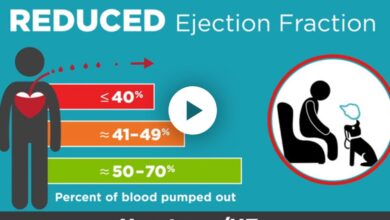WHAT IS AN ANEURYSM?

Surely you’ve heard someone talk about having an aneurysm or you knew someone who did. When you heard that word, did you know what it was? ANEURYSM That’s an unusual word spelled an unusual way! I’m sure it gets misspelled all the time. Just what is an aneurysm?
The term aneurysm is given to an abnormal enlargement of an arterial blood vessel. The word originated from the Greek term aneurunein which over time was changed to aneurusma which meant dilatation. Aneurusma translated to Middle English became aneurysm, the term we use today.
Arterial blood vessels, or arteries, carry blood from the heart to every part of the body. The largest artery, the aorta, exits from the heart, and branches from the aorta carry blood to the brain, the upper and lower extremities, the lungs, the intestinal tract, the liver, the kidneys, and the reproductive organs. As arteries branch, they get smaller in diameter, or caliber, and their names change. Arteries become arterioles, and arterioles become capillaries.
An aneurysm is an excessive, localized enlargement of an artery caused by a weakness in the arterial wall. Some aneurysms are congenital, or present at birth, but most develop over time as a result of several factors. Important in their development is a family history of aneurysm, the presence of long-standing high blood pressure, and a history of cigarette smoking. These factors plus the presence of arteriosclerosis combine to weaken and stiffen the arterial wall causing a localized bulge or ballooning—like the bulge in your bicycle tire.
Aneurysms are named for their location and their shape. They occur most often in large arteries, but can be found anywhere. The following is a list of locations in order of frequency:
Abdominal Aortic Aneurysm (AAA)—an aneurysm in the part of the aorta between the
diaphragm and the top of the bony pelvis.
Thoracic Aortic Aneurysm (TAA)—an aneurysm in the part of the aorta between the aortic
valve of the heart and the top of the diaphragm.
Cerebral Aneurysm—an aneurysm in an artery in either cerebral hemisphere.
Popliteal Aneurysm—an aneurysm in the space behind the knee (popliteal artery)
Mesenteric Artery Aneurysm—an aneurysm in an artery supplying blood to the intestines
Splenic Artery Aneurysm—an aneurysm in the artery to the spleen
Aneurysms are also categorized by shape:
Fusiform Aneurysms—the entire circumference of the vessel wall bulges. It resembles the
body of a snake after swallowing a mouse.
Saccular Aneurysms—a sac-like pouch develops on only one side of the vessel wall.
Dissecting Aneurysms—blood forces it’s way through the inner lining of the vessel and
between the layers of the vessel wall and dissects, or separates, the layers.
AAA’s are the most common aneurysms and are three times more prevalent than TAA’s. Cerebral aneurysms are mostly saccular in shape and are also called “berry aneurysms.” They resemble berries on the stem of a vine.
The wall of an artery (especially the aorta) has three layers: the inner, the middle, the outer layers (adventitia). The inner layer, the intima, is very smooth to allow blood to flow through the artery unimpeded. High blood pressure and turbulence in the blood can cause abrasions in the smooth inner lining. These rough, abraded areas attract platelets (clot-forming cells), fibrin, and cholesterol and form an arteriosclerotic plaque. At the same time the smooth muscle cells in the middle layer of the wall, the media, begin to die weakening the wall. As this combination progresses, the vessel wall further weakens, begins to bulge, and forms an aneurysm. Eventually, the aneurysm enlarges to a critical diameter** above which it is at risk of rupture. A burst, or ruptured, aneurysm is a catastrophic event with massive blood loss. Death is a near certainty (90% possibility in 48 hours) unless immediate surgery is performed.
**[Chance of AAA rupture by diameter: 5-5.9cm—3%-15% chance
6.0-6.9cm—10%-20%
7.0-7.9cm—20%-40%
above 8.0cm—30%-50% chance]
Most AAA’s are found by accident when doing a diagnostic test looking for something else. That’s good because after it’s found the doctor can then do a CT or ultrasound every 6 months and monitor the size of the aneurysm. When it grows to a diameter above 5.5 cm, surgery to repair the aneurysm is recommended.
Screening for AAA is done but candidates for screening are limited to males with a family history of AAA, long term history of high blood pressure, and who have ever smoked. The United States Preventive Services Task Force gives this recommendation a “B” grade meaning they recommend it only for those men who fit the criteria—not for everyone.
Cerebral aneurysms are a real problem, too. They are difficult to diagnose and difficult to treat. Difficult to diagnose because the symptoms are non-specific and similar to those of a migraine headache. The tip-off is the patient describes the headache as the “worst headache of my life,” and a stiff neck and worrisome neurologic findings are an accompaniment. Difficult to treat because they aren’t always located in a part of the brain easy to access surgically. Plus getting to the aneurysm to place a clip on it can result in serious neurologic consequences. However, a ruptured cerebral aneurysm causes devastating stroke-like neurologic problems and/or death, and having it repaired is worth the risk of surgery.
Having an aneurysm is a “darned if you do, darned if you don’t” kind of situation. If you have one and it ruptures, you have a high percentage chance of death. If you have one and have it repaired, there’s a high rate of consequences from the surgery. But it’s a risk one must take. New “endovascular” procedures repair the AAA from the inside out by placing a stent-like graft inside the artery. This replaces and stabilizes the weakened inner layer preventing rupture. This technique is described as “minimally invasive” and is similar to stenting a coronary artery, yet on a much larger scale. It eliminates a 12-inch abdominal incision and uprooting the entire intestinal tract to access the abdominal aorta. The results of the procedure may actually be better, too.
Aneurysms are a serious problem whenever and wherever they occur. The repair of an aneurysm is a serious risk, too. But finding an aneurysm before it gets too large and repairing it electively, before it’s an emergency, is a far less risky situation. If you’re in the high risk group of people, do something (such as Life Line Screening) to be screened for AAA. It’s worth the minor expense.
References: Mayo Clinic Newsletter mayoclinic.org
Johns Hopkins Newsletter johnshopkins.org
Cleveland Clinic Newsletter clevelandclinic.org
Robinson D, Mees B, Verhagen H, Chuen J. Aortic Aneurysms—screening, surveillance, and referral. Aust Fam Physician 2013 June;42(6):364-369.
Lu H, Du W, Ren L, Hamblin HM, Becker RC, Chen YE, Fan Y. Vascular Smooth Muscle Cells in Aortic Aneurysm: From Genetics to Mechanisms. J Am Heart Association 2021;10:e023601.




